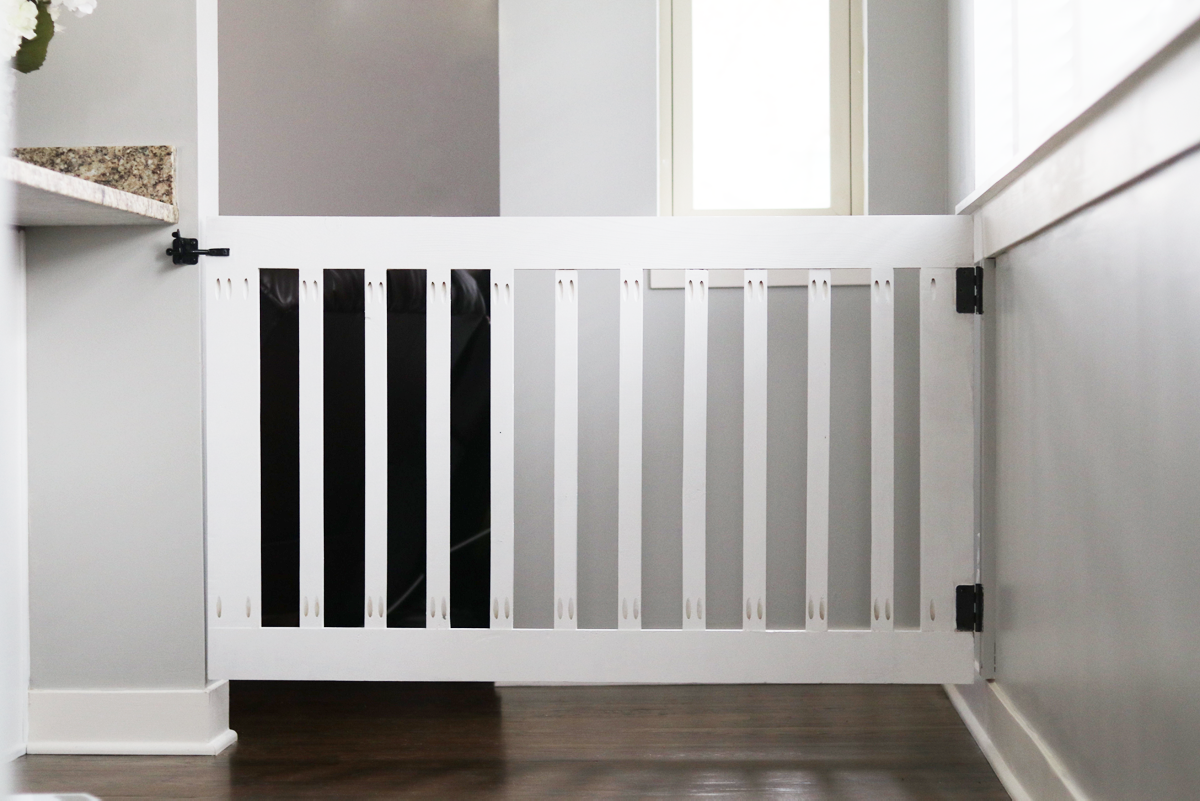
DIY Baby Gate
You guys. I got a chop saw! It was my Valentine’s Day present (ha!), & I LOVE IT. I used to saw my wood by hand (not fun) or go to Lowe’s with my meticulous cut list, hoping I wouldn’t need to make any adjustments along the way. Now that I have my own way to cut wood I have soooo many projects in mind! But first things first. Today we’re talking about how to build a baby gate. I love, love, LOVE how our custom baby gates came out, & anyone with small kiddos knows the importance of a good baby gate.
I love how you can make these for any space & customize them to match your home. We have a really wide hallway & a normal baby gate won’t fit, so this was the perfect option for us. I made a total of 4 gates for our house– 2 for the stairs (top & bottom), and 2 to block off our family room. Any mama knows, sometimes you just gotta block the babies in one area, haha! This project is relatively easy (especially if you have a little experience building) it just takes a little patience. Read on to see how I made these gates all by my little ole self :)
1. Measure
Your measurements will be contingent on your space– Since I made 4 gates for my house, I’m listing the measurements I used for one of the gates & you can adjust for your space accordingly. Be sure to make your gate 2 inches less than the width of where you want your gate to go. So if your hallway is 42″, your gate should be 40″. This is so you have enough space for the latch, hinge, and anchoring wood if you aren’t drilling directly into the stud of the wall. If there’s no stud where you want to put your gate, it’s a good idea to anchor a 1×4″ into the wall first, then attach the gate to that.
Supplies:
2- 1x4x8’s
2- 1x2x8’s
3″ Gate Hinges
Gate Latch
Kreg Jig
1 1/4″ Pocket Hole Screws
2. Cut
Cut your wood to size– here’s a sample cut list from our measurements. Our hall is 42″, the width of the gate is 40″ & the height of the gate is just under 27″. The slats (1×2’s) are spaced about 2.75″ apart, & I based that spacing on a standard baby gate.
7- 1×2’s at 20″ (these are the slats)
2- 1×4’s at 20″ (the wider slats on either side)
2 1×4’s at 40″ (the top & bottom of the gate)
1 1x4x27″ (the wall anchor if there’s no stud to drill into)
It’s really important all the measurements are as EXACT as you can get them, otherwise you’ll have gaps where the slats meet the top/bottom of your gate.
3. Add Pocket Holes
Before creating pocket holes with your Kreg Jig, line up all your wood pieces as if you’re going to assemble your gate, just to make sure everything fits together nicely. You’re going to add pocket holes to all the pieces that go vertically– so the 7 1×2″ slats & the 2 1×4″ sides.
To add pocket holes on your 1×2’s, line up your Kreg Jig at the ends of the 1×2 (The KJ and the 1×2 are the same width, so it fits perfectly), clamp it & drill your holes using the provided attachment. Since the 1×4’s are wider, you’ll have to do things a little bit differently. For the 1×4’s, line up the Kreg Jig on either side of the wood & drill into the hole that is closest to the edge. So in the photo below, you’d drill into the RIGHT hole to create your pocket hole.
4. Assemble
Once all your vertical pieces have pocket holes, you are ready to put them together. Drill in your 1 1/4″ pocket hole screws to assemble your pieces together.
For some of the slats, I needed to stack some cards under the slats to make sure they lined up exactly right– I’m not sure if my wood was a little warped in places, or if they weren’t exactly the same width but having that extra lift in places helped me get them in straight.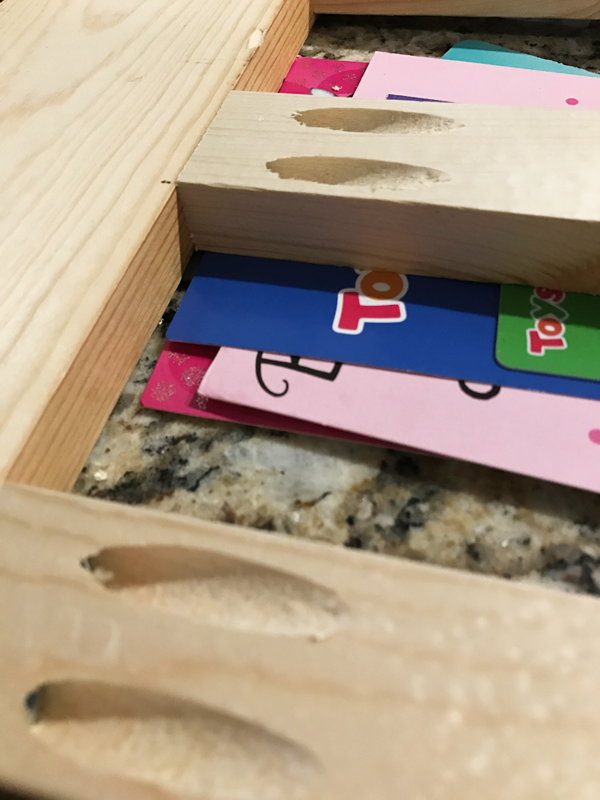
5. Sand & Paint
If you’re going to paint or stain your wood, now’s the time to do that. I was impatient & wanted these babies up STAT (so I did this after the gate was installed) but it’s easier to do BEFORE you put the hinges on. I took my hand sander & made sure they were nice & smooth– using an electric sander is SO MUCH EASIER & faster than doing it by hand. But do whatcha gotta do. Just make sure it’s smooth & wiped clean before you go ahead & paint.
I had some leftover paint from when we painted our kitchen cabinets (be sure to check out that DIY post!) so I used the same primer & cabinet paint from that. You can also leave them natural or stain them, depending on what look you’re going for. That’s the beauty of these gates– they’re totally customizable.
6. Install Hinges
I used these 3″ black hinges with rounded corners, but there are a bunch of different styles & colors, so choose something that goes with your style. Screw the hinge to the edge of your gate. 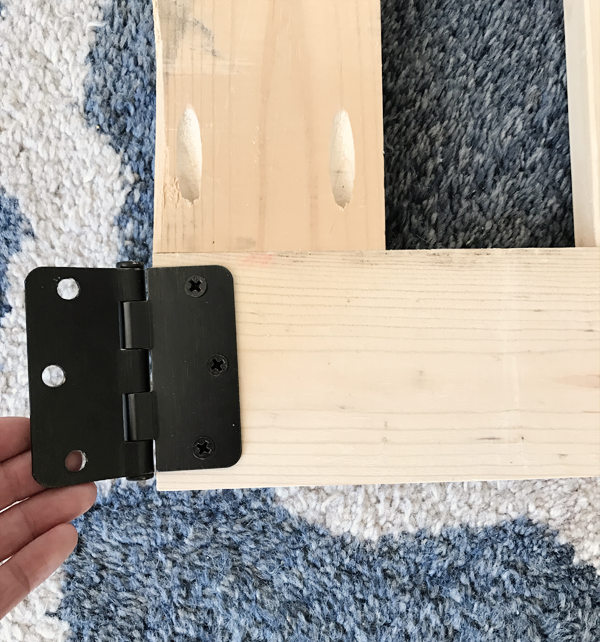
7. Anchor to the Wall
If you don’t have studs where the gate is going to go, you’ll need to drill a 1×4″ in the wall so you can anchor your gate to that. I like using these easy-to-use wall anchors. First, I place my 1×4″ where I want it to go & use a drill bit to put holes through the wood into the wall. I put a hole in the top, middle and bottom of the wood, so 3 holes total. Then, remove the wood & place the anchors in the holes. Screw in the anchor with a screw driver until it’s flush with the wall. Then, place the 1×4″ back on the wall & screw into the wood & anchor.
Now it’s time to attach the gate to the anchoring wood/wall. It’s easier if you have a second person to hold the gate up while you drill it in.
Also, be sure you’re attaching the hinge so that you can open the gate entirely. The hinge should close in the direction you want the gate to open. NOT like how I did it the first time, where the gate couldn’t even open, lol. See how the gate is hitting the wood when I tried to swing it open (to the right) in the photo below? Yeah, don’t do that. Haha. To fix it, I unscrewed the hinge from the anchor wood & flipped my gate upside down.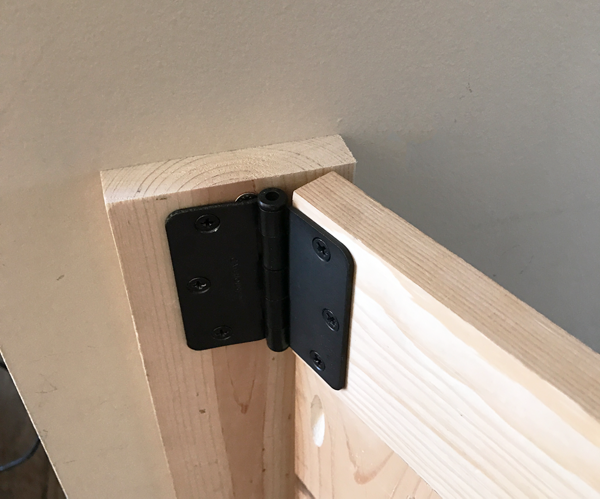
8. install the latch
Once you’ve installed your gate, you can now put on your latch. First, just hold up your latch to get an idea where you need to position your pieces. Go ahead and drill the latch into the wall at the level you want it to go. The nice thing about this latch system is you have some wiggle room so the arm doesn’t have to be 100% precise, which means you don’t have to meticulously measure. Also, when it comes to the latch arm, the screws that it comes with ended up being too long, going through the other side of the gate. I had 2 leftover screws from the hinges (the two small black ones in the photo below), so I just used those instead. 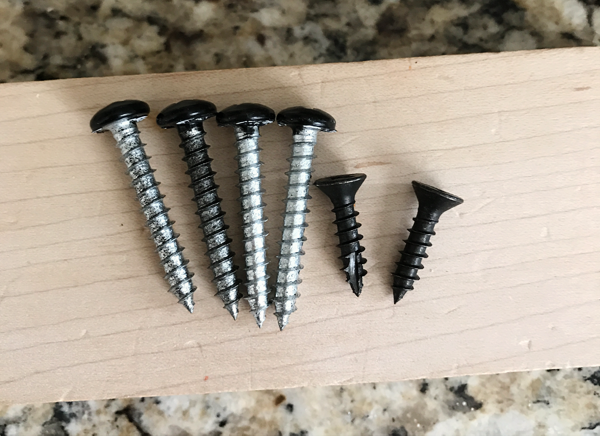
Here’s what it looks like when it’s installed.
Guess what? You’re done! Sit back & admire your beautiful work :)
Aside from them looking pretty & matching our house, I love how we can swing them to the wall & leave them open if we want.
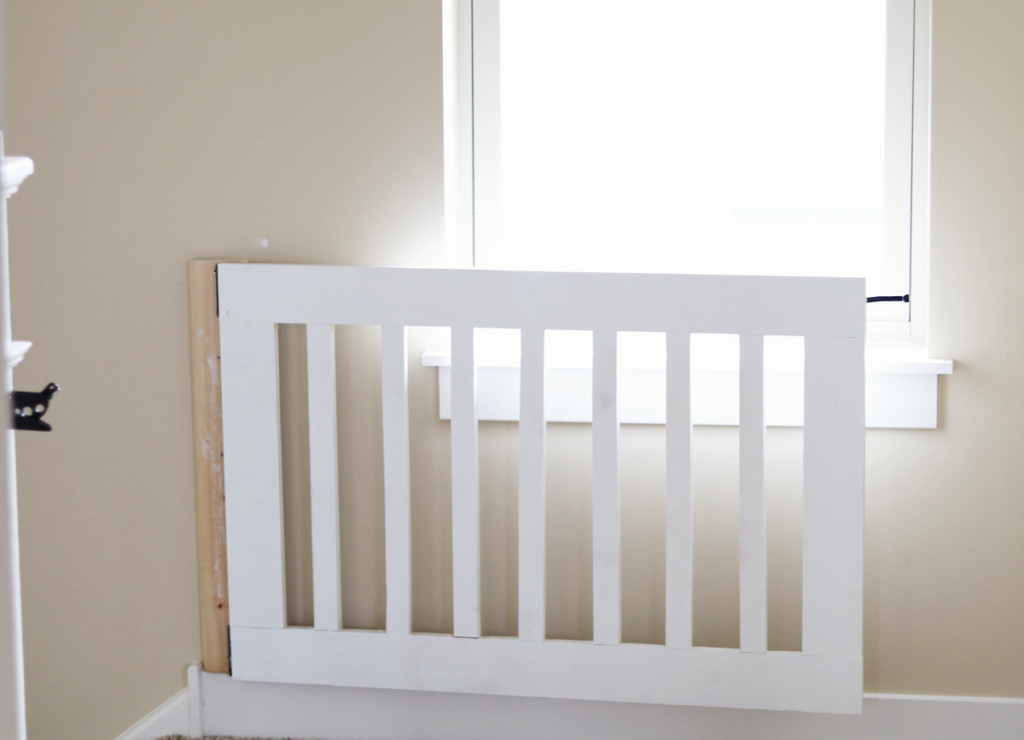
I still have yet to paint the second floor walls, hence the bare wood– that will be painted the same color as the walls :) I hope you guys enjoyed this post & you learned a thing or two. Please, please, PLEASE share your photos with me if you decide to make them, I’d love to see how yours turned out!! & feel free to leave your questions or comments below, I’d be happy to answer them & chat with you.
If you’re looking for more DIY projects, be sure to check out the DIY tab at the top of the page :) Here are some of my favorite DIY projects I’ve done:
Thanks for stopping by!
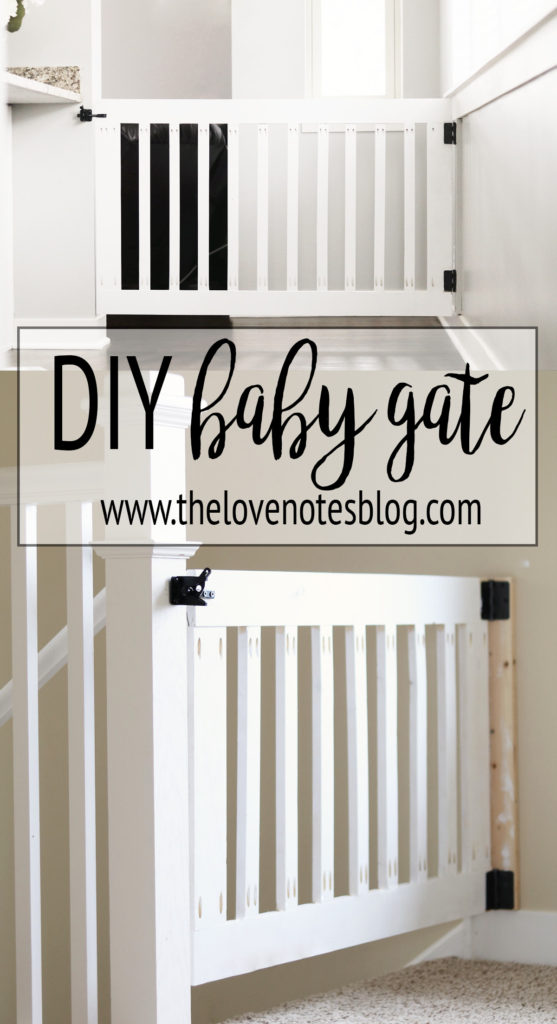
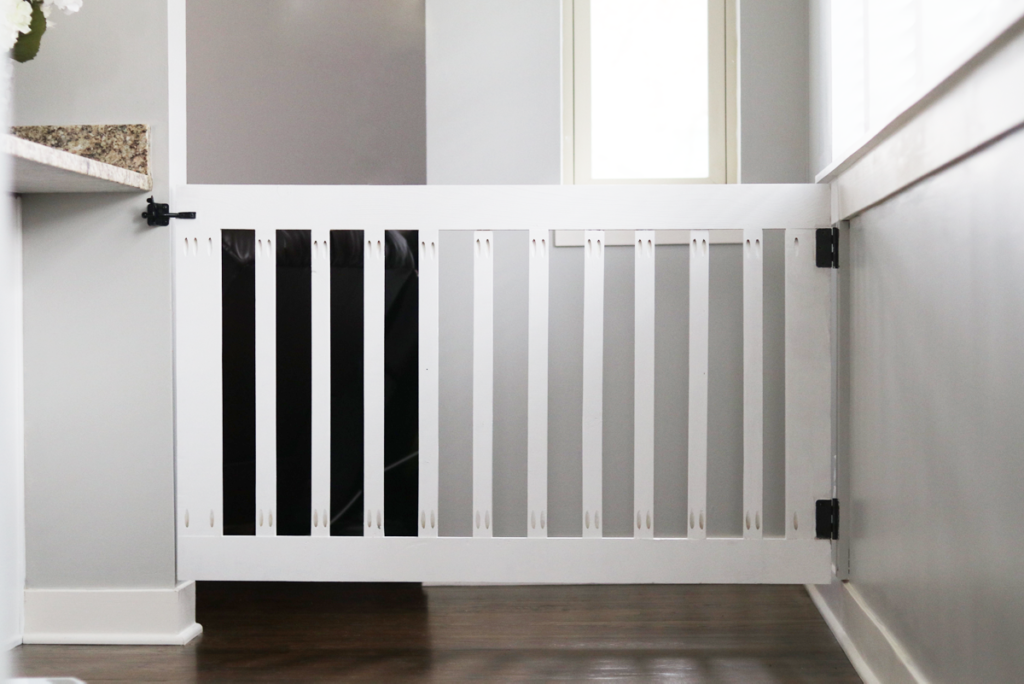

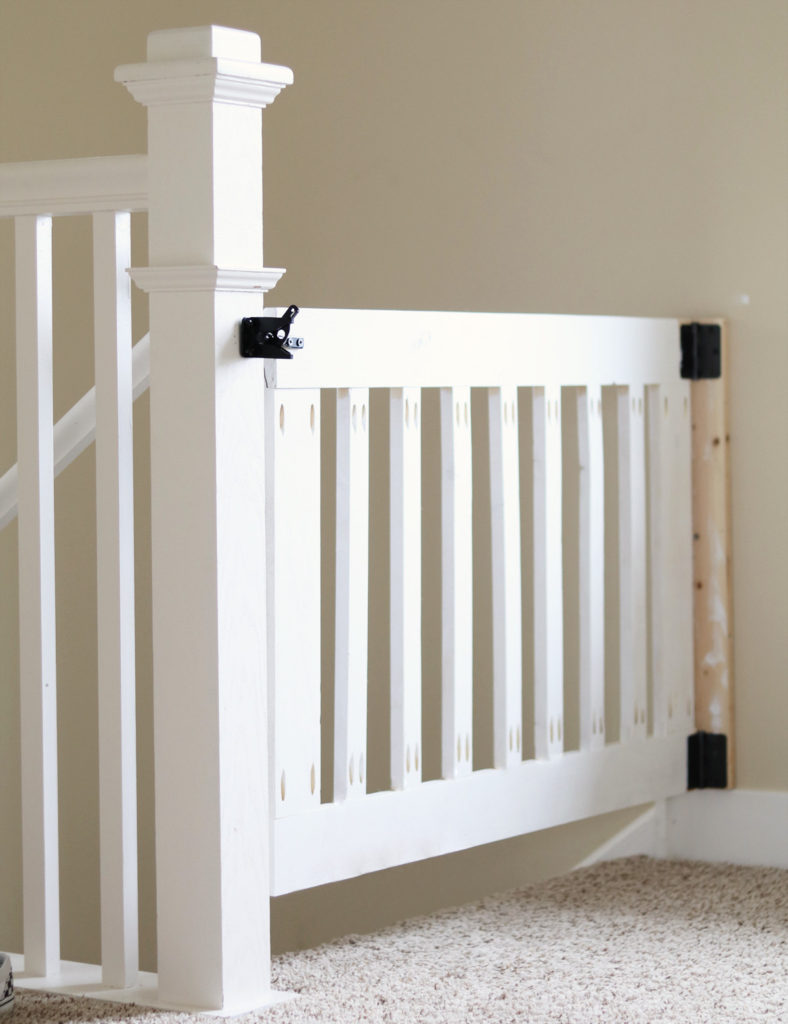
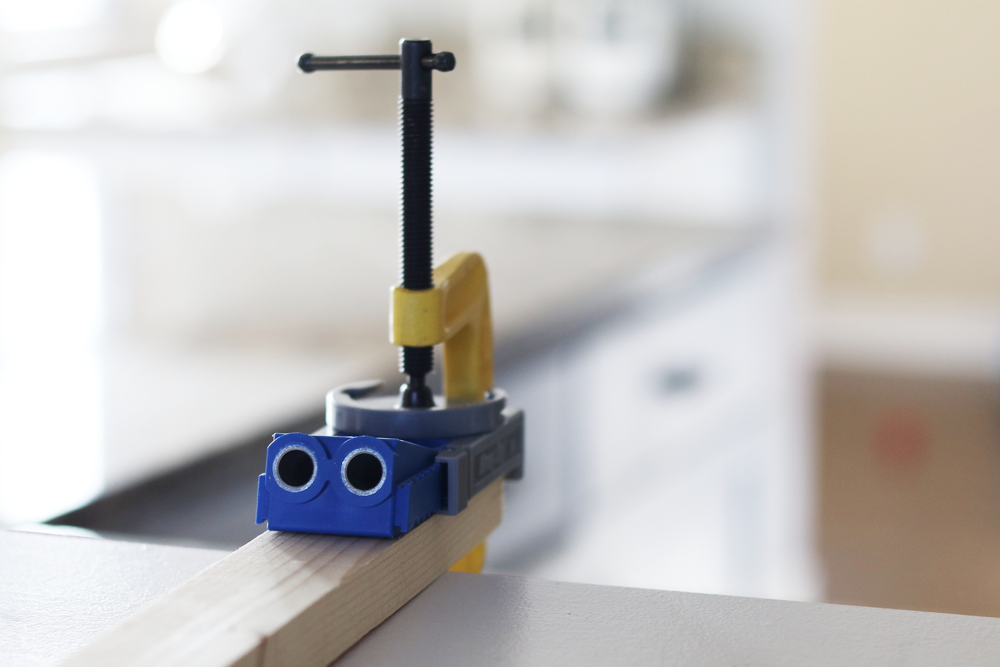
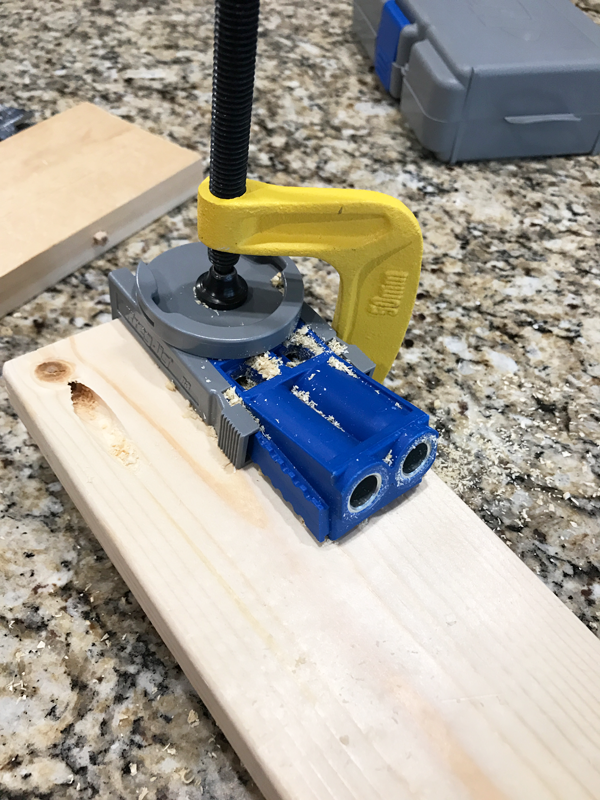
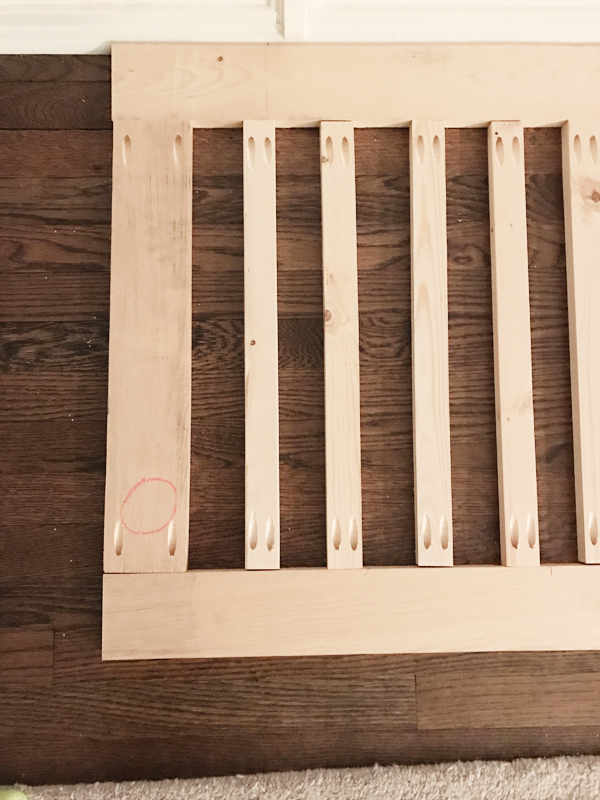
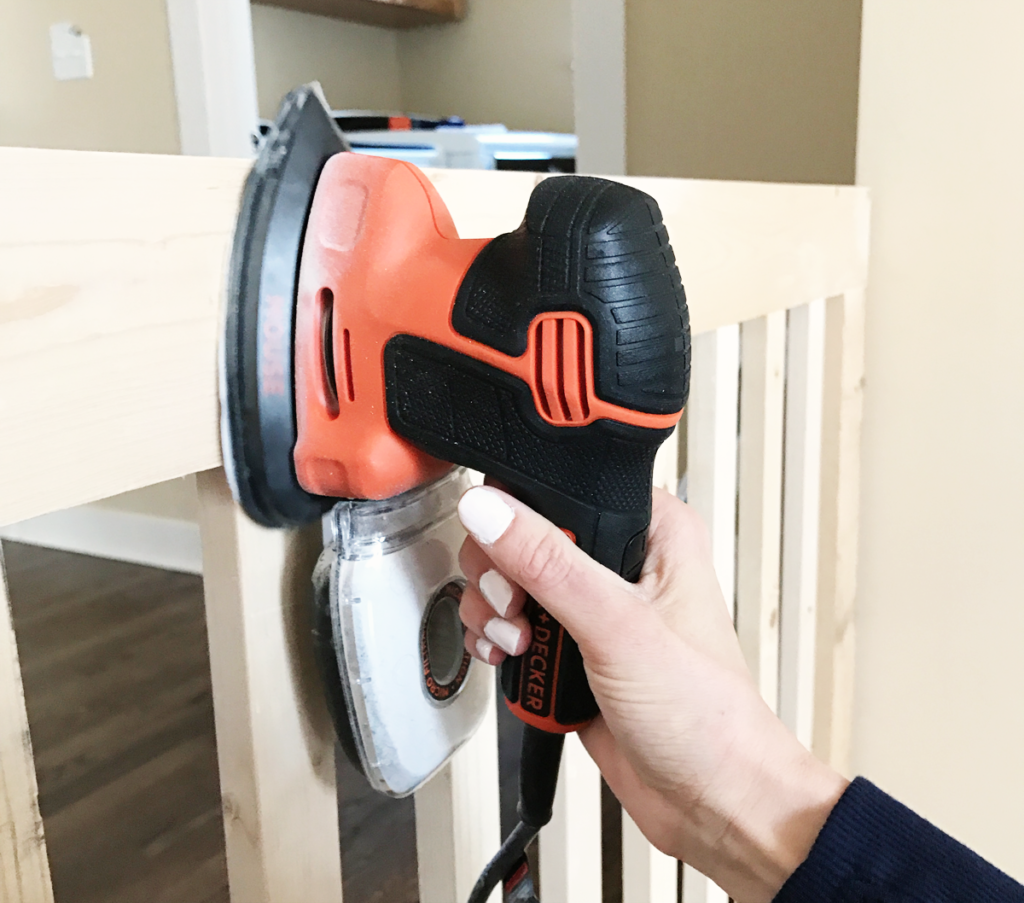
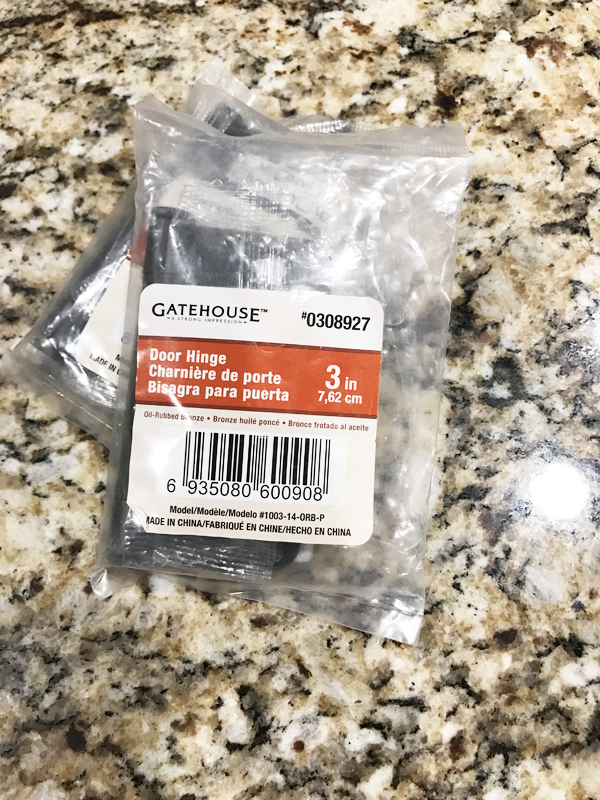
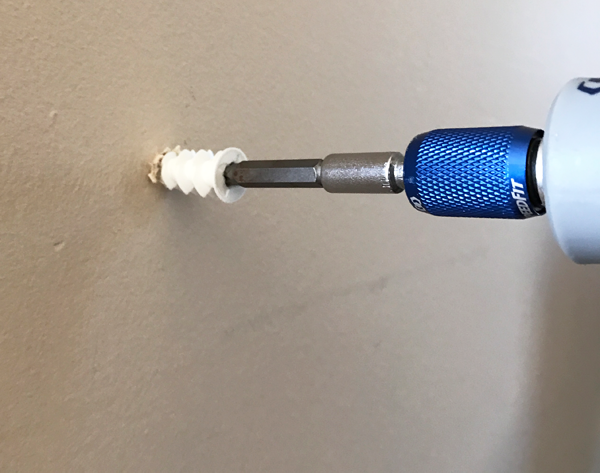
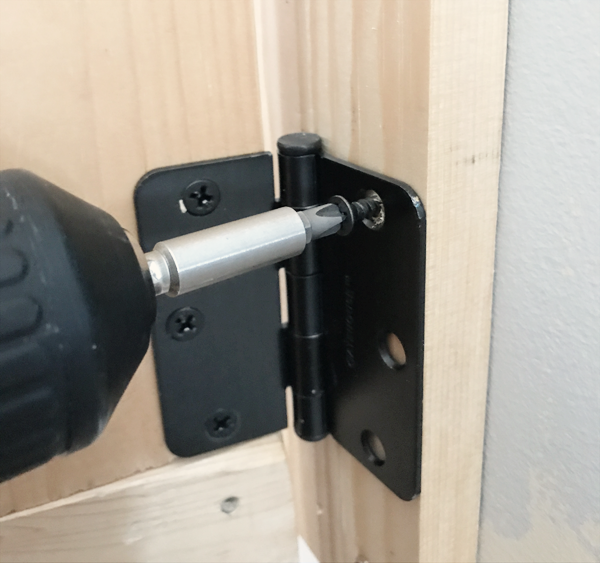
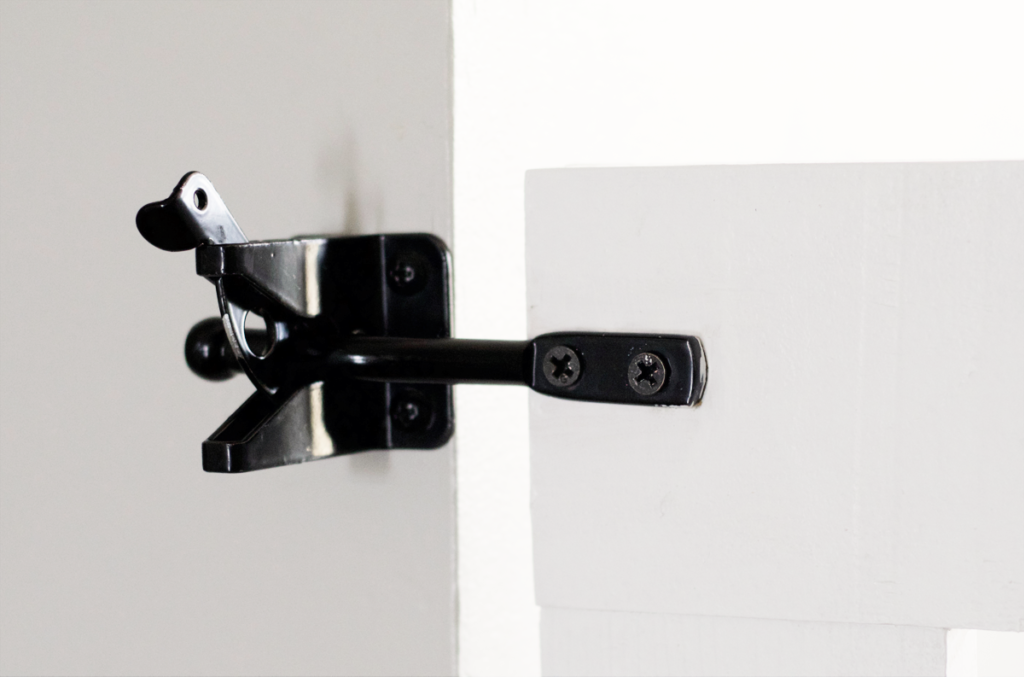

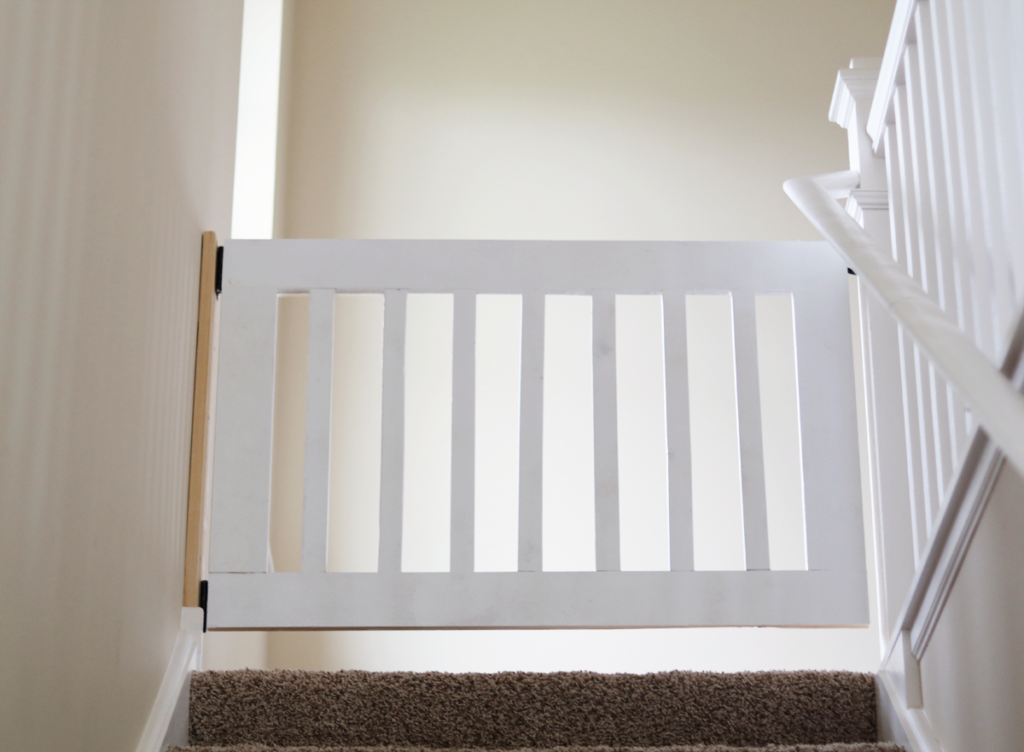
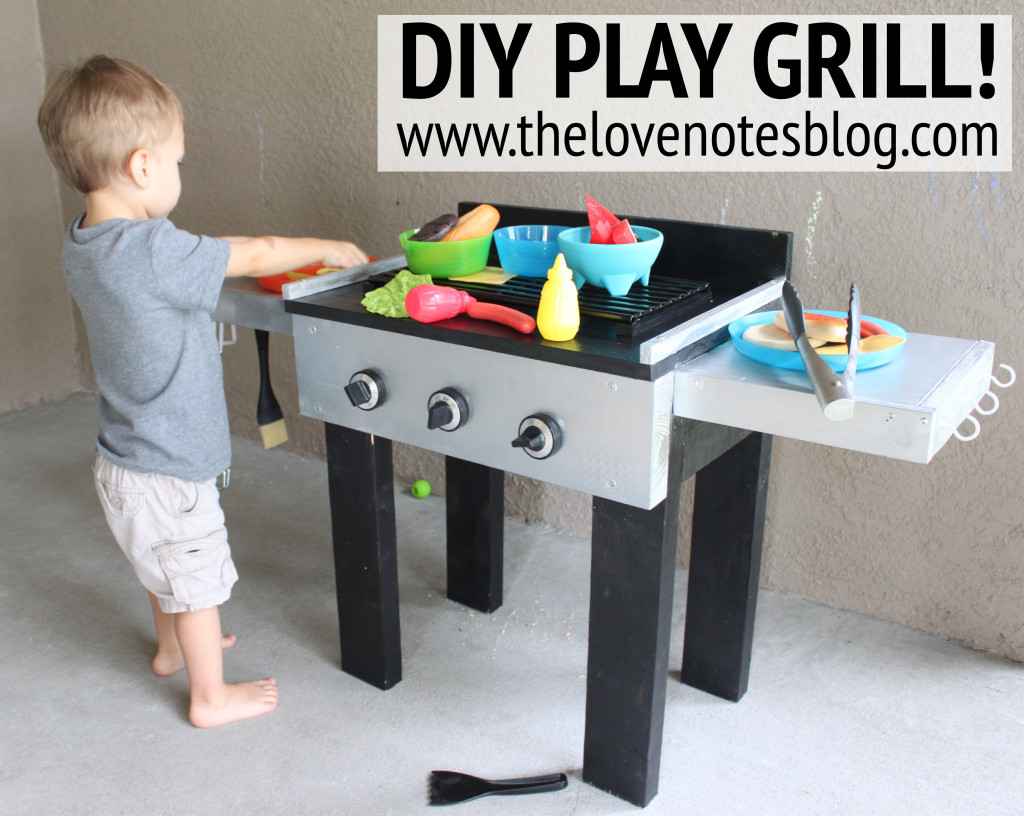
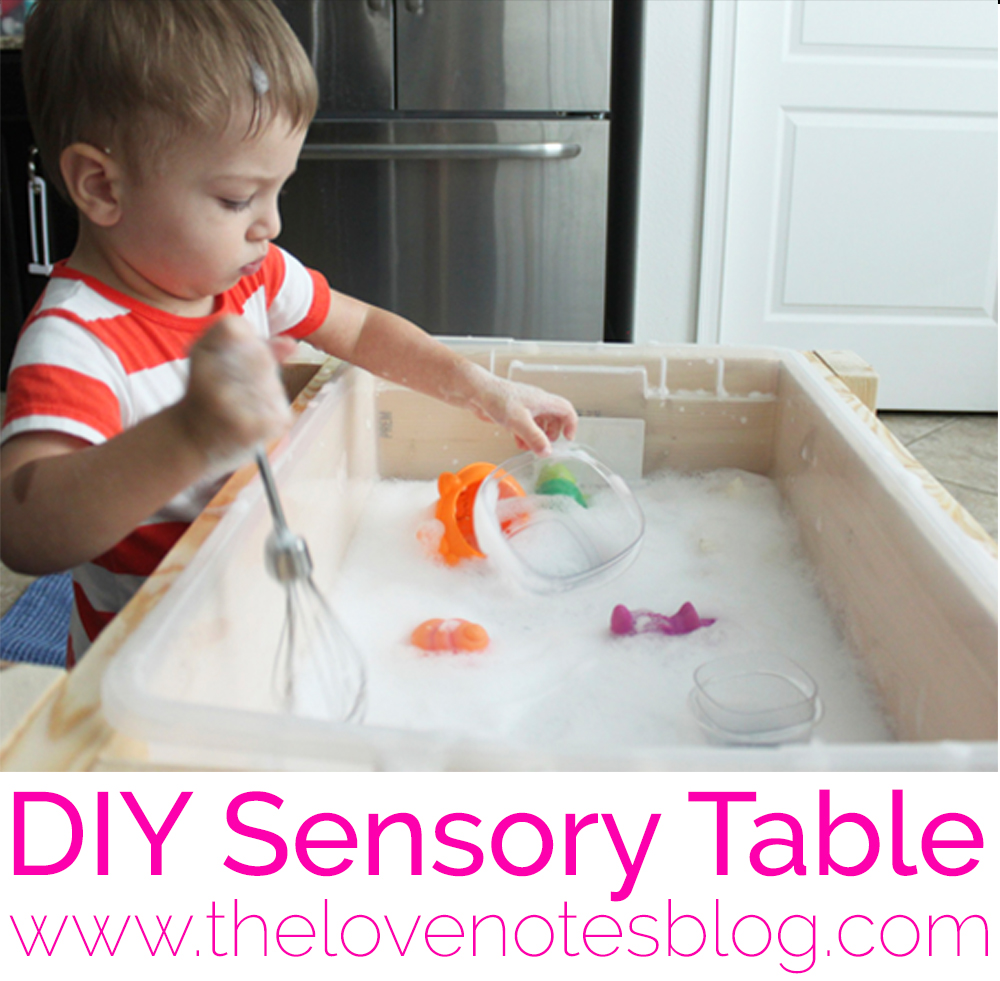
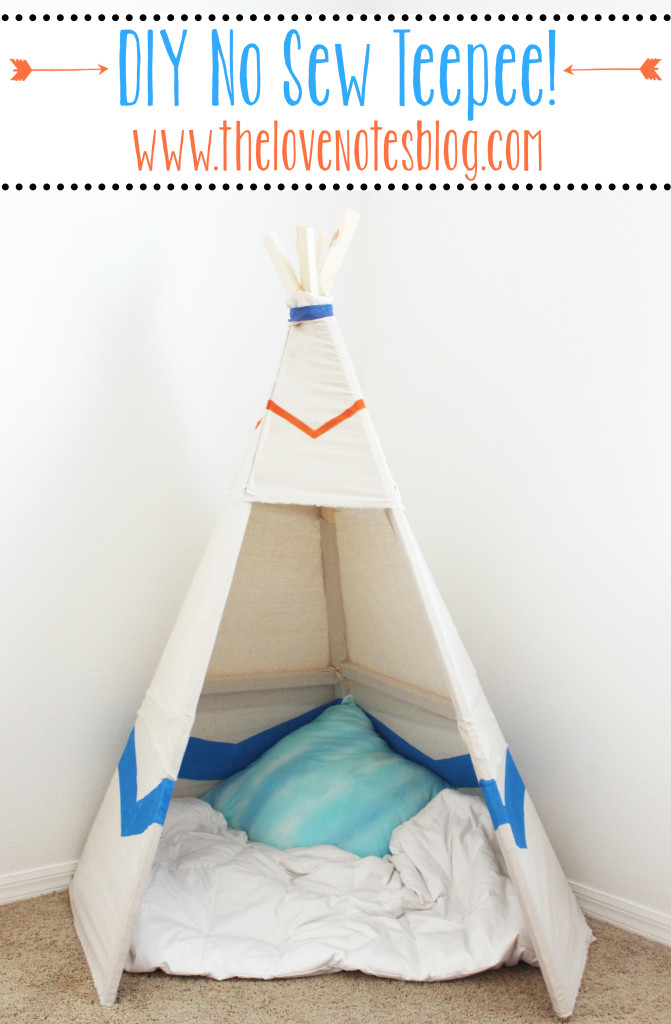

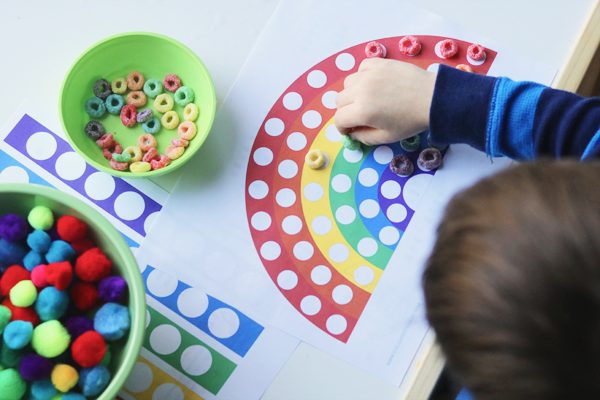

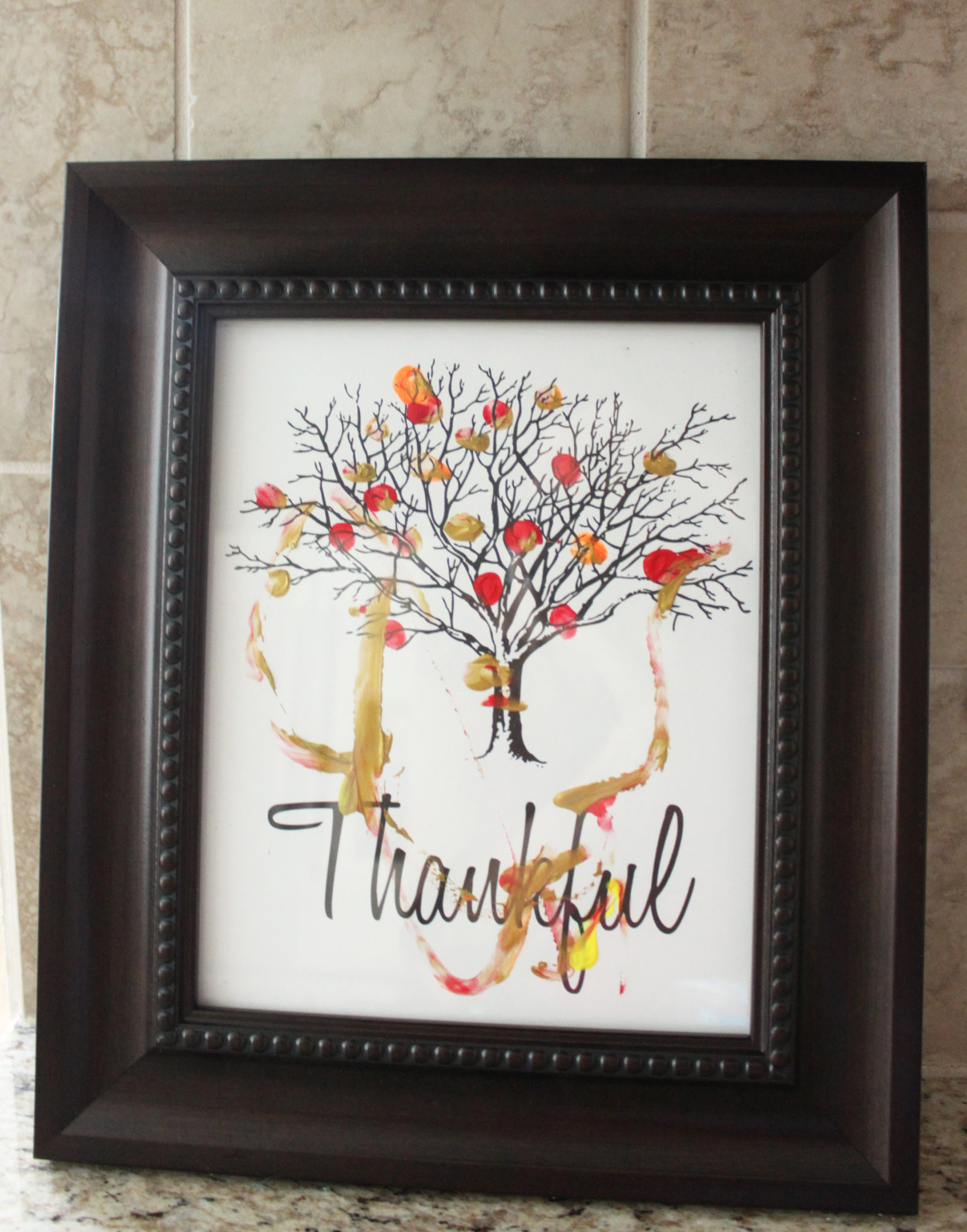

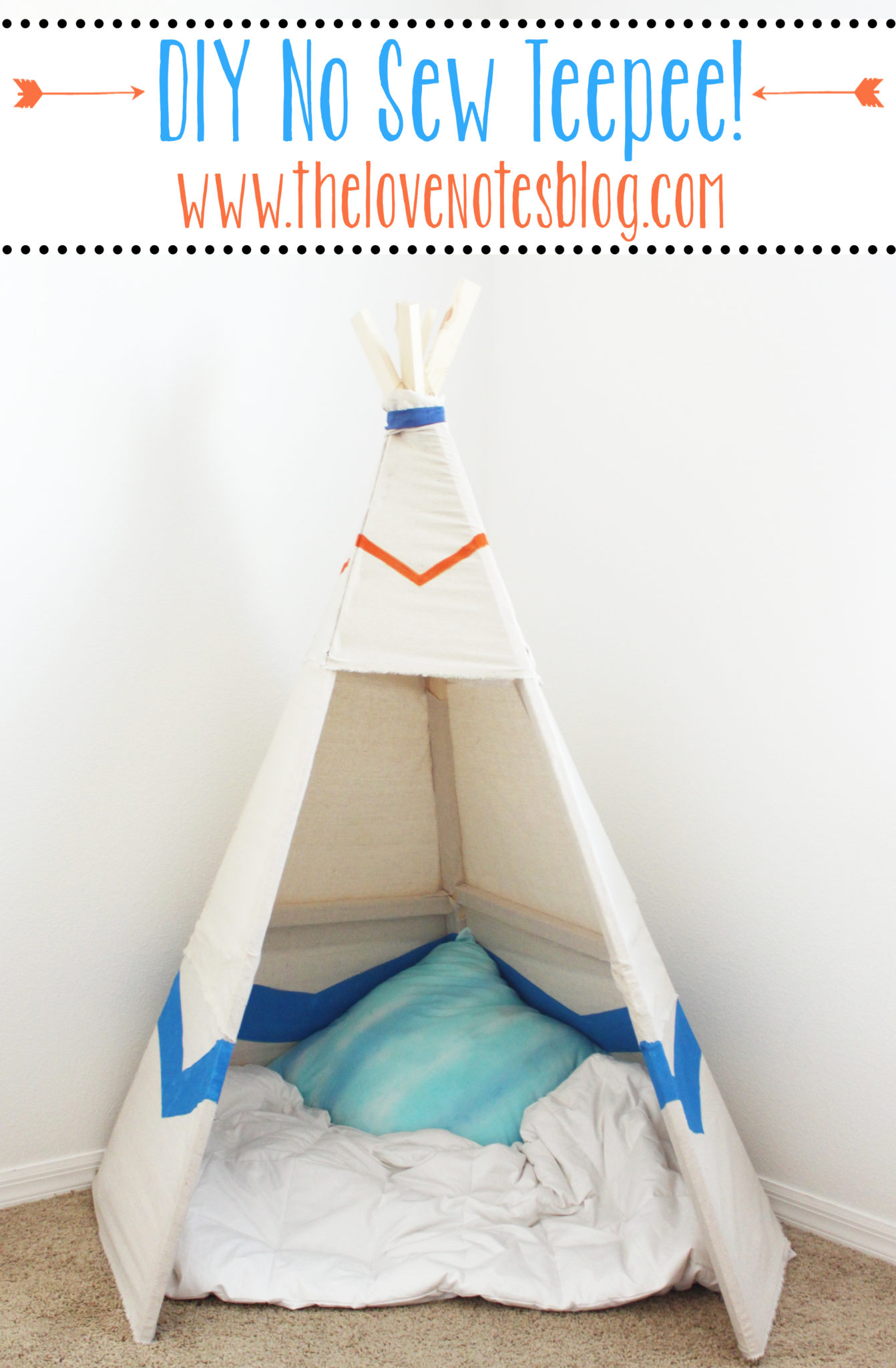
20 Comments
Craig Brydges
Did you find with the wider gates you had an issue with sagging over time?
Kristen
Hi, Craig! Thank you for your question. I’ve had no issues with sagging so far! The only thing that has “worn” is a spot of paint just above the latch from it opening & touching the wall. Other than that it still works like the day it was installed :)
Amanda
Hello,
Do you think it’s necessary to use a Kreg Jig or can I use another method if I don’t have one? The gate looks great!
thelovenotesblog
Hi, Amanda! Thanks for your comment, I’m glad you love the gates! I personally feel Kreg Jig gives the most professional look since you’re hiding the screws, but there are other methods. You can drill through the horizontal piece from the top, down into the slats, but you’ll definitely want to pre-drill so they don’t split. You can also use longer slats that will screw through the back of the horizontal pieces, but the gate will be bulkier since you’ll be adding extra width with the slats (if that makes sense?). I hope that helps! I love building, so the Kreg Jig is worth the investment for me personally. Good luck!! :)
Kacie
Do you have a rough estimate of what supplies cost for 1 gate? I’m trying to convince my husband that this is a realistic project for us next year haha. Our house set-up requires a lot of gates, and I’d like them to be pretty!
thelovenotesblog
Hi Kacie! Thanks for your comment. I would say each gate costs around $20-$25 & I shopped for all of my supplies at Lowe’s. We’ve gotten SO many compliments about our gates & I love telling people I built them myself, haha. Good luck convincing hubby, I hope it works out! Let me know if you have any more questions :)
Brooke
I would be making this for the top of the stairs between two banisters. Would I need to put in the supporting 1×4?
Pingback:
Katie
Hi, have you had any trouble with your toddler being able to open the latch used on this gate? I love the design but I think my toddler will be able to figure out how to open it – but I don’t know what alternative latches could work with this design.
Kristen
Hi Katie!
Thanks for reaching out. We used the gates most frequently in the family room, where the latch was on the other side of the gate & much harder for them to reach. I never had issues with them undoing it so I didn’t even realize that was a possibility until now, haha! I can definitely see your concern. If you had to you could probably look for a more complicated latch, or there might even be ones that lock. Best of luck to you!
Kristen
Bill
Why go to all the trouble of creating pocket holes and then not filling and covering them? that’s the entire point of pocket holes.
I’m sure this project worked for you, but there are a lot of steps in here that are done wrong
Kristen
Hi Bill! Thanks for your feedback— Although I’m not sure why you’re visiting my blog if you already know what you’re doing! ;) You can certainly fill the pocket holes, I should have mentioned that I skipped that step on ours. You do you!
Nl
I just followed your instructions, with a few slight modifications and the dog/baby gate looks awesome!!! Thank you so much for the instructions that were sooo easy to follow for this newbie.
Matt
Thanks for the ideas – been trying to think of what to do to contain our dog if we get a place with a more open floor-plan, all the “off the shelf” gates are much too short and easily jumped defeating the point. Something like this it would be trivial to make taller just cut it to the desired fit!
kb
Beautiful work and enjoy your site.
Just a comment about the pocket holes……
I have built many items with pocket holes and find the edges very sharp and many splinters….
I am just concerned about those little fingers that might be cut??……
I just fill them with wood putty or plugs and then sand…..
Takes just a few more minutes with very little effort.
Kyra
Hey, can you tell me which type of wood (species) you used for this project? Thanks!
Pingback:
Pingback:
Pandu
Thank you for this post. I am stealing your design and building this gate today. Question on the anchor to dry wall, Is that reliable and tolerate the handling of gate over the time?
mark cohen
Can you make a stair gate suitably for children 124 cm high.
If yes please can you provide a provide a price and lead time to be sent to Birmingham.